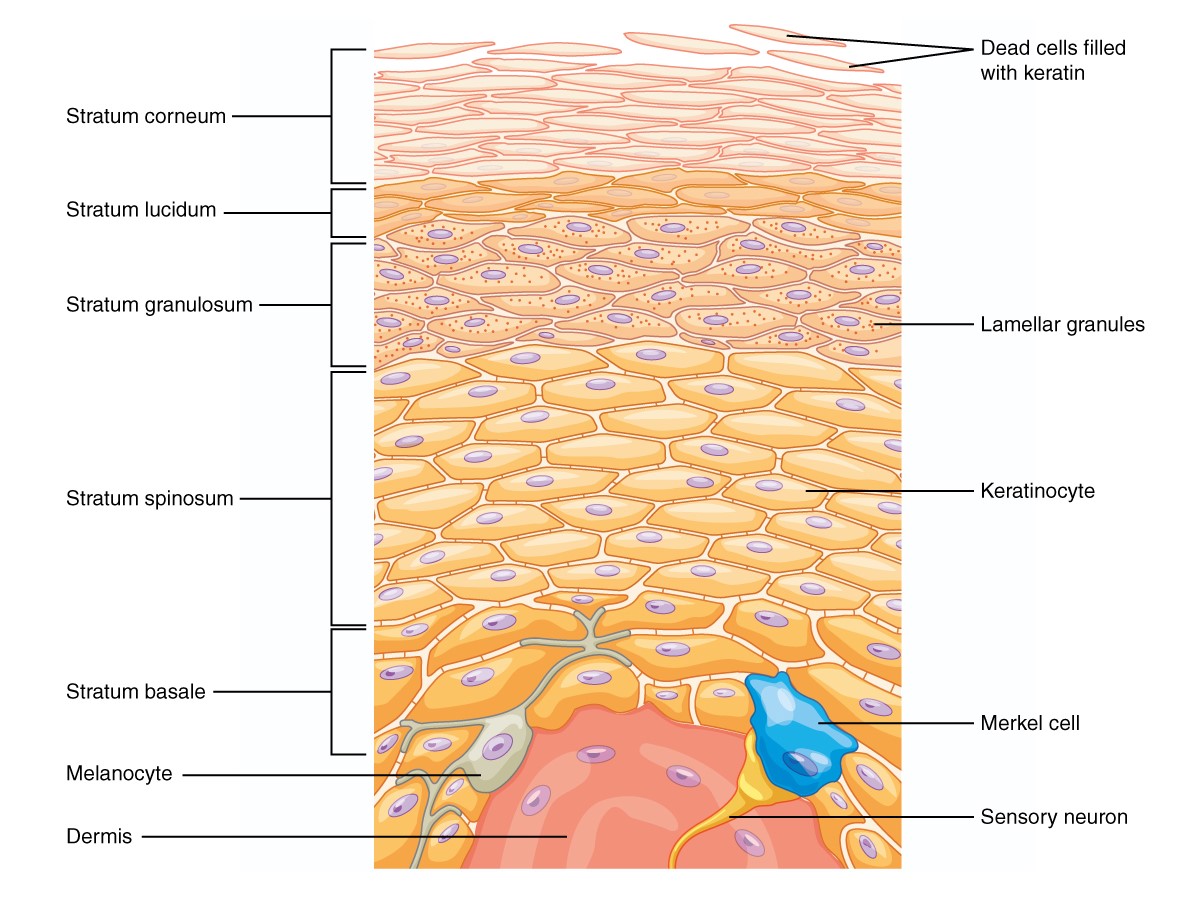Playlist
Show Playlist
Hide Playlist
Dermis: Cells and Layers
-
Slides Dermis Cells and Layers.pdf
-
Download Lecture Overview
00:01 Moving on to the dermis, which is the second layer of the skin. 00:07 The dermis is derived from mesoderm and has two layers, the papillary layer and the reticular layer, as you can see on the picture there. 00:17 The papillary layer has loose connective tissue and capillary loops within it. 00:23 So the epidermis. 00:24 You remember I mentioned to you that the epidermis is avascular. 00:27 It doesn't have any blood vessels. 00:29 So the epidermis gets its nutrients from the capillary loops within the dermal papilla. 00:36 The second layer is the reticular layer. 00:38 And it is a dense, irregular collagenous connective tissue which is found just beneath the papillary layer. 00:46 It's got collagen, which are fibers, elastic fibers, and fibroblasts. 00:54 So imagine you've got the epidermis. 00:56 If you look at the mattress, the mattress that we sleep on, the upper layer and the lower layer of the matrix. 01:02 Within that, you've got the springs so that you can imagine that the collagen fibers and elastic fibers and of course the fibroblasts, which are the cells that help to produce collagen and elastin. 01:16 So when there is a defect or problem with the fibroblasts, we get a condition called scleroderma where you get thickening of the skin due to increased production of these fibers. Again, when there's a problem with the fibroblasts, we get keloids. 01:35 And this a condition called keloids is more peculiar in black skins, more common in Bexhill. And of course there could be genetic factors associated with it as well. 01:46 And then a defect in the elastic fibers we get a condition called pseudoxanthoma elasticum PXE, which when you look at the person it looks like chicken skin on the neck.
About the Lecture
The lecture Dermis: Cells and Layers by Ncoza Dlova is from the course Introduction to Dermatology.
Included Quiz Questions
What best describes the structure of the papillary layer of the dermis?
- Loose connective tissue
- Dense, irregular, collagenous connective tissue
- Dense, regular, collagenous connective tissue
- Collagen, elastic fibers, and fibroblasts
- Collagen, elastic fibers, and myofibroblasts
Customer reviews
5,0 of 5 stars
| 5 Stars |
|
5 |
| 4 Stars |
|
0 |
| 3 Stars |
|
0 |
| 2 Stars |
|
0 |
| 1 Star |
|
0 |




